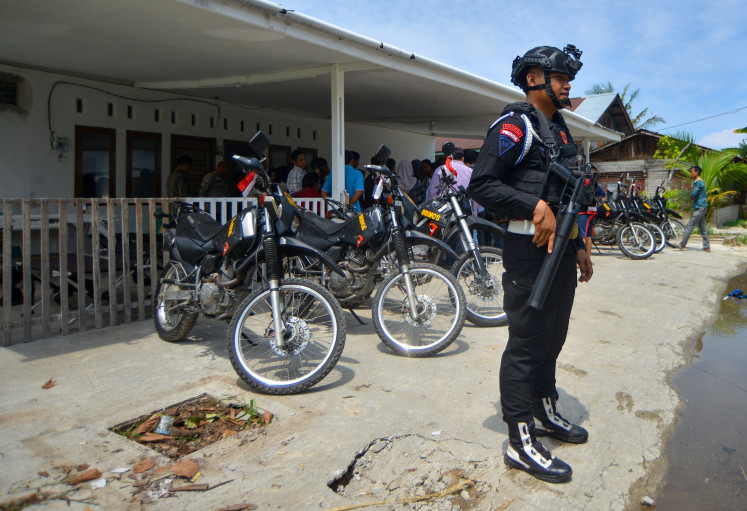Popular Reads
Top Results
Can't find what you're looking for?
View all search resultsPopular Reads
Top Results
Can't find what you're looking for?
View all search resultsEditorial: Welcome to Jakarta
Many people hope to find their fortunes in Jakarta, despite endless proven examples of how difficult life can be in the capital, particularly for those who lack knowledge and skills
Change text size
Gift Premium Articles
to Anyone
M
any people hope to find their fortunes in Jakarta, despite endless proven examples of how difficult life can be in the capital, particularly for those who lack knowledge and skills.
Jakarta is home to that nation’s highest rate of urbanization. The city government has estimated that about 50,000 newcomers will arrive together with Jakartans who will soon return from their hometowns where they celebrated the Idul Fitri holidays.
It seems that many dream seekers from across the country do not care about reports that thousands of their predecessors now resort to occupying spaces under bridges or live in makeshift shelters after failing to obtain decent jobs. For them, Jakarta remains a city of hope that promises a better life.
Some 9.6 million people currently live in this metropolitan city. Contemplating this figure, people should recognize the extent of the population density of this city, which is so evident in the many slum areas and the intense daily traffic congestion.
Due to overpopulation, Jakarta now faces a myriad of problems: worsening traffic jams on nearly all city roads. air pollution, water shortages — especially during the dry season, flooding during the rainy season, the growing number of slum areas and rampant illegal businesses in public places, such as on sidewalks and in city parks.
Therefore, it is understandable that the Jakarta administration has continuously discouraged people of other regions from pouring into the city. Their efforts appear to have been successful, as statistics reveal a declining trend of migrants moving to Jakarta following Idul Fitri.
According to City Population and Civil Registration Agency data, the number of people who came to the city following Idul Fitri reached 204,830 in 2003, but the figure has since fallen consistently, dropping to 190,256 people in 2004, 180,767people in 2005, 124,427 people in 2006, 109,617 people in 2007, 88,473 people in 2008, 69,554 people in 2009 and 60,000 people in 2010. This year the number is predicted to decline to 50,000.
If the data is valid, it is good news for Jakarta and the central government, as it may reflect both the city’s successful campaign and the nation’s collective decentralization effort to establish new economic centers elsewhere in Indonesia.
The statistics show that Jakarta is no longer the only economic magnet due to rapid development and industrialization in its buffer cities, such as Tangerang, Bekasi, Depok and Bogor. Unfortunately, it seems likely the history and complicity of Jakarta’s urbanization will be repeated in the satellite cities.
From Jakarta’s point of view, overpopulation is a primary source of many complicated problems facing the city. If the population goes unchecked, it will be more difficult for the city authorities to solve existing problems.
Regional autonomy has played its part in reducing urbanization in Jakarta, but commitment to development from regional governments, and hence job creation, needs to be maintained, otherwise the best talents will continue to be lured to Jakarta.
Neither the Jakarta administration nor the central government can prohibit people from coming to Jakarta because the capital is an open city. Only when the people find that their futures are more optimistic in their hometowns, rather than in Jakarta, will they refrain from gambling on the difficult process of dealing with mass-urbanization.










